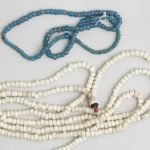1783
The North West Company vs. HBC
The arrival of European ships into the waterways of Canada led to a race between Britain and France for control of the available natural resources. The Hudson’s Bay Company (HBC) maintained control over the northern regions of land that drained into the large bay; the French traders moved across the southern Great Lakes systems. Fur became the commodity of exchange with one male beaver called Made Beaver, the standard. Canada was a valuable land for markets in London and Paris. The existence of people, cultures and languages different from British or French was irrelevant to the European explorer as North America was marked for European control in the name of a King.
For the 20 years following the 1763 surrender of French territory in North America, the fur trade was in turmoil. Montreal attracted Scottish businesspeople who used French labour to travel the old French trade routes. They used any method necessary to lure the fur trade away from the Hudson Bay, including making liquor and guns and easily transported small merchandise available for sale.
In 1770 many smaller traders merged to form the North West Company. The HBC response was to establish the first inland post at Fort Cumberland to try and draw trade back into the traditional Hudson Bay routes. The North West Company and other independent traders worked to bypass the HBC. They started to establish posts on the southern shore of the Great Slave Lake in 1783, eventually establishing Fort Providence (now Old Fort Providence) in 1789 near the mouth of Yellowknife Bay; Fort of the Forks (now Fort Simpson) at the junction of the Liard and Mackenzie rivers in 1804; Fort Liard in 1807 and Fort Norman (now Tulita) in 1810.
During the first two decades of the 19th century, these two companies often built neighbouring trading posts. The first HBC post in current-day NWT was called “Chiswick House” (1803) located in the Slave River Delta, where the HBC struggled against the more entrenched French traders and other rival traders like the XY Company. The competition for furs saw forts changing hands and occasional violence. The amalgamation of the Hudson’s Bay Company and the North West Company in 1821 stabilized the fur business in the Athabasca and Mackenzie river systems.



